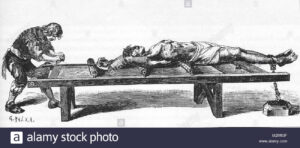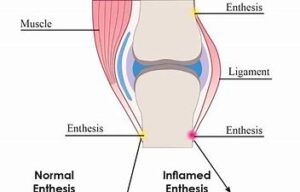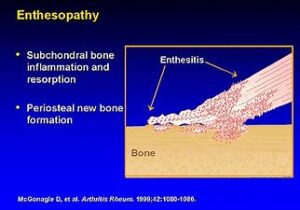The medieval rack just makes sense right? You pull on the bones and stretch them to become longer but there seems to be an emptiness of anecdotal cases where the medieval rack increases height.
Now stretching on object in the tensile direction in the plastic deformation range can make an object longer up until the failure point. The problem is obviously the failure point but ideally a bone should adapt to each new point of plastic deformation. So you rack in the plastic deformation range lengthen bone a tiny bit. The bone adapts then you lengthen more and repeat.
The plastic deformation point for bone is smaller than that of tendons and ligaments therefore you should be able to get into the plastic deformation range for bone without worrying about tendon and ligament damage. Although that does not factor in muscle fatigue.
The tendons attach to bone at the enthesis.
From Enthesis and Enthesopathy website:
The new bone formation that occurs in diseases such as Ankylosing Spondylitis and Psoriatic Arthritis is an exaggeration of the normal tendency to make bone on the outer surface of the enthesis.
So you see pulling on the bones does work to increase bone length the problem is the pulling that occurs is not in the longitudinal direction there is direct proof of those at the enthesis.
So the rack may not pull on the bones at all the way it is designed it may pull on the tendons which in turn pull on the enthesis.
Also it may be that the rack causes bone growth so slowly that it is not feasible.
So the two issues with the rack:
- It may not generate sufficient tensile strain on the bone in a longitudinal direction
- Since the body has to adapt to each new point of plastic deformation it may be too slow to generate feasible growth.
For a feasible plastic deformation strategy:
- The object must constantly stretch the bone in a longitudinal direction in the plastic deformation range
- The object must be such that the bone has time to adapt to avoid bone failure
- The object must be applied enough to generate noticeable growth.



